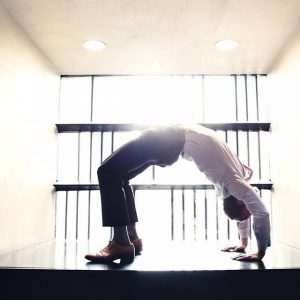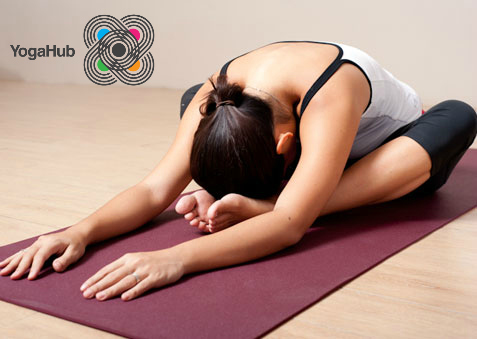One important aspect of yoga that is a rarely explained yet consistent feature of any class is the correct sequencing of counterposes. Used to neutralize the effects of certain strenuous (and some not so strenuous!) or deeply-held asanas, counterposes are vital to ensure we not only receive maximum pranic (energetic) benefits from our practice, but also to physically balance out our muscles, tissues and joints to avoid over-extension and return our bodies back to their natural state.
Counterposes in Yoga
In ‘The Heart of Yoga’, T.K.S Desikachar likens the counteracting of asanas to the ability to climb a tree, and the necessity of being able to ensure we can get down again once we’ve reached our limitation. Returning the body to its natural condition after strenuous releasing or stretching is vital to ensure tension is not carried on to the next posture or situation throughout the day. Similarly, simply being able to observe these effects and the necessity of them is a skill we learn through sustained attention and practice.
Polar Opposites
Yoga teaches us of the presence and acceptance of both positive and negative in all actions; whether conscious or unconscious, physical or mental, spiritual or emotional. The awareness of these polarizing elements of all things in life stems from the belief that purusha and prakriti, the two vital energies within which encompass the ‘Self’ or sense of authenticity we all possess, are in constant motion with one another. The sense of self (purusha) is constantly compromising with all matter that is encountered and observed (prakriti), giving and taking with just the right amount of pressure to ensure our continued existence and balance.
With this in mind, the importance of counteracting the pranic energies of asanas with suitable counterposes is to ensure the correct balancing of energy and allow for the release of purusha (self) through prakriti (everything else) with as little difficulty as possible. The ability to recognise which actions are positive and which are negative can also be related to everyday life and our interactions in general, and this is yet another reason why yoga is beneficial to every aspect of our lives.
Self and Body Awareness
The cultivation of this self-awareness is something which helps us to recognise when a ‘neutralizing’ asana is necessary to counteract the action of another. It helps us to cultivate a better body awareness and thus to be able to recognise when, where and how we need to direct energy to counteract a problem or issue. Learning which counterposes to use for which asanas is a vital part of any YTT course and serves as a valuable skill for teachers to guide their students safely through a practice.
Some common counterposes encountered in everyday flow classes are as follows;
Balasana or ‘child’s pose’ to counteract inversions such as Headstand (Sirsasana) or any other asanas which place emphasis on the neck area.

Forearm stand
Matsyasana or ‘fish pose’ as a counterpose for more extensive backbends such as Dhanurasana or ‘wheel pose’, which should never be followed directly by forward folding asanas.

Dhanurasana (‘full wheel pose’) – counterposes include ‘Matsyasana’
Any highly pranic asanas are generally followed by poses rich in ‘Langhana’, meaning lightness or soothing, in order to calm the energetic spike accessed by the first asana.
Yoga teachers are taught to correctly sequence classes to ensure that no energy-inducing asana is left without a counterpose, in order to return the body closer to it’s natural state instead of leaving it open to injury and over-extension.
**
Read more from Jenny at Upward Facing Blog



